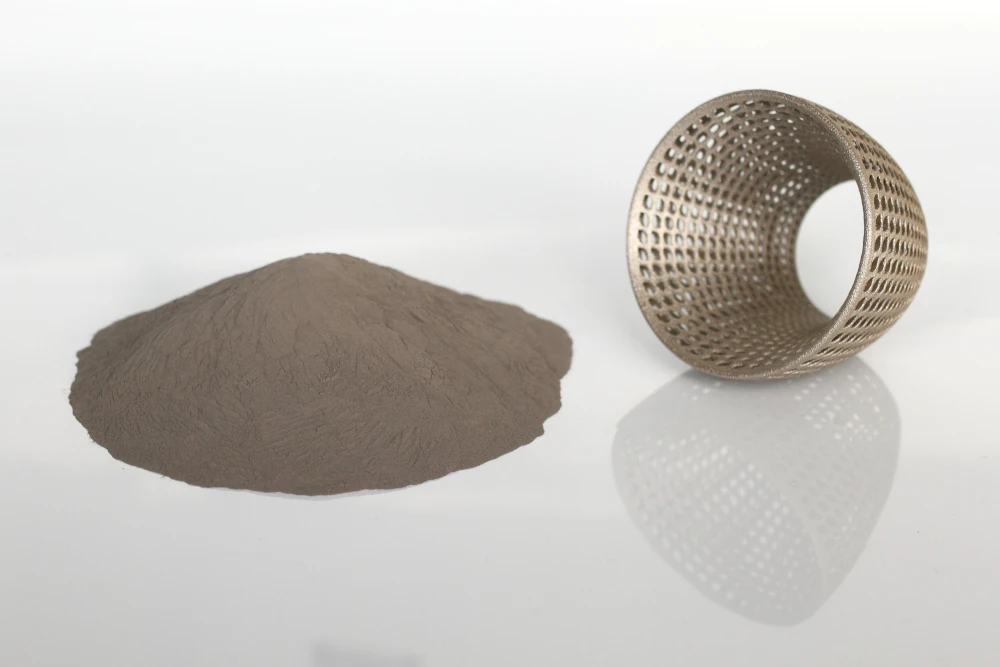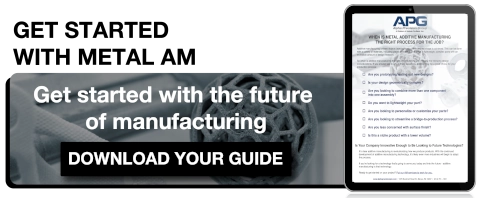
Advantages of Additive Manufacturing over Conventional Manufacturing
In today's modern world, metal additive manufacturing (AM) is revolutionizing the way products are manufactured. Metal AM offers a wide range of advantages over traditional machining processes, from cost savings to design flexibility and faster production times.
Here, we compare and contrast subtractive metal manufacturing methods with additive manufacturing, highlighting AM's many advantages over conventional methods.
Additive vs. Subtractive Manufacturing: What’s the Difference?
Additive manufacturing, sometimes referred to as 3D printing, is a process of creating three-dimensional objects from a digital model. This approach involves building up layers of material to create an object.
Subtractive manufacturing is the opposite of additive manufacturing and involves removing material from a solid block of material in order to create an object. Subtractive techniques typically involve drilling, milling, and lathing to create desired shapes and contours.
6 Types of Metal Manufacturing
Six examples of metal manufacturing methods, which we further outline below, include:
- Traditional Powder Metallurgy (PM)
- CNC Machining
- Die Casting
- Investment Casting
- Metal Injection Molding
- Metal Additive Manufacturing
1. Powder Metallurgy
Powder Metallurgy (PM) starts out with a metal powder, which travels through a hopper system, into a feed shoe, and then into the die cavity. The shape of the cavity determines the basic shape of the part. Next, the press places an immense amount of pressure on the powder in the die, causing the particles to mechanically interlock (at this point, the part is known as a green part and is still somewhat brittle). These parts then require a final sinter process to bond the particles together.
PM is a great way to quickly create large volumes of parts, although creating the tooling (dies) takes time and additional resources. Additionally, as time goes on, the tooling wears down and will need to be replaced due to the pressure it must repeatedly withstand during the PM process.
2. CNC Machining
CNC (computerized numerical control) machining is a subtractive manufacturing process that uses computer-controlled machinery to remove material from a solid block of metal in order to create components. CNC machines are programmed with specific instructions allowing the machine to accurately cut and shape the material into intricate geometries.
CNC machining allows for high accuracy and repeatability, making it a popular choice for complex fabrication projects, however, it also has some inherent drawbacks, such as cost, size limitations, and the potential for operator error.
3. Investment Casting
Investment casting involves coating a wax pattern with a refractory material to make a mold, which is then melted away before pouring molten metal into the leftover cavity. This mold is placed in a vat and cooled, hardening the material around the pattern inside the mold. The casting is then removed from the mold and heated to remove the wax or plastic form.
Investment casting allows for high accuracy and repeatability, making it popular for creating complex castings with intricate details and contours.
Despite these advantages, as with the PM process, the cost of tooling can be a deterrent to using investment casting. Costs go up even further when you add in the specialized equipment, refractory material, and specialized labor cost.
4. Die-Casting
Die casting involves injecting molten metal under high pressure into a steel die or mold. This injection molding method creates intricate and detailed components for industries such as automotive, aerospace, and electronics.
Die casting allows for the rapid production of components with a high degree of accuracy and repeatability. The injection speed and pressure are adjustable, allowing complex geometries to be created quickly and efficiently with minimal waste material.
Due to specialized machinery and tooling costs, die-casting is too costly and complex for small-scale productions.
5. Metal Injection Molding
Metal injection molding (MIM) combines traditional plastic injection molding techniques with powdered metal. This method involves mixing a powdered metal with a binder to form an even mixture that’s referred to as “feedstock”. This feedstock is then heated and injected into a mold at high pressure, allowing for the production of complex components with intricate details. As with PM, MIM parts require a final sintering process to bond the particles together.
MIM is capable of producing parts in a variety of shapes, sizes, or complexity and is also incredibly cost-effective due to its high degree of automation. That being said, initial lead times are long (5-7 weeks for tooling and 2-4 weeks to produce & ship parts), making design changes highly expensive.
6. Metal Additive Manufacturing
During the metal AM process, a computer-controlled machine uses additive technologies to build parts, layer by layer. For example, during the binder jetting process, a binding agent is deposited onto the powder bed, bonding the powdered metal together to form a solid part.
This additive process allows for parts to be designed with intricate details that would have been impossible to achieve with traditional machining processes. It’s increasingly used across many industries such as automotive, aerospace, healthcare, and defense due to its ability to rapidly produce complex components with minimal material waste.
Metal AM doesn’t require the costly tooling associated with other metal manufacturing methods and designs can be changed within minutes by making adjustments in the original CAD (computer-aided design) file, further cutting down lead times.
Primary Factors to Consider When Choosing A Manufacturing Type
When choosing a manufacturing type, there are two primary factors to consider: complexity and volume. Complexity refers to how intricate the product design is and how easily it can be replicated. Volume refers to the production rate—how many items need to be manufactured in a specific timeframe. Depending on the complexity of the product and the size of your required volume, one process may be more suited to your needs than another.
Below are the typical complexities and volumes for various metal manufacturing processes:
- CNC Machining - Medium-low complexity, medium-low volume
- Investment Casting - High complexity, medium-low volume
- Die-Casting - Medium Complexity, high volume
- Metal Injection Molding - High complexity, high volume
- Metal Additive Manufacturing - High complexity, low or high volume
Post-Processing & Finishing of Manufactured Parts
When it comes to post-processing and finishing, parts created by the aforementioned manufacturing methods go through similar treatments to achieve the required surface finish and functionality. These methods can include everything from filing, grinding, and polishing, to sandblasting, priming, and applying paint.
Post-processing and finishing of additive parts may require a different approach if a smooth surface is desired, due to the inherent layer lines created during production. Post-processing of these parts ranges from conventional methods such as machining, laser polishing, and vibratory finishing, to non-conventional methods such as ultrasonic cavitation abrasive finishing (UCAF).
Advantages of Additive Manufacturing Over Other Methods
Metal additive manufacturing offers a number of advantages over traditional metal fabrication methods, such as creating complex geometries, reducing lead times, and so much more. Below, we outline some of the key benefits you can expect from metal AM.
Complex Geometries
Additive manufacturing allows engineers to create geometric shapes such as honeycomb lattice structures, helices, and arches that would otherwise be impossible to fabricate with traditional methods.
AM also allows for highly customized parts which can be difficult or impractical to produce using any other method. Such complex geometries provide an unprecedented level of design freedom while ensuring precise execution every time.
Reduced Lead Times
Conventional manufacturing methods often require specialized tooling and multiple steps, such as cutting, drilling, and machining, which can add up to lengthy production cycles. The layer-by-layer method of additive manufacturing allows for complex shapes to be created with minimal material waste and no need for costly tooling.
With metal 3D printing, a part can be designed, manufactured, and tested in a fraction of the time it takes for others, greatly decreasing time spent prototyping and time to market.
Full-Moving Assemblies
Rather than being limited to individual components, metal additive manufacturing allows you to create complex parts that come together to form fully functioning assemblies, eliminating the need for manual assembly during production.
Reduced Labor Requirements
Metal AM is an increasingly efficient method of fabrication that reduces labor costs. Unlike traditional machining processes, metal additive manufacturing requires fewer steps and little to no manual assembly, making it less labor-intensive than other manufacturing methods.
Once a design is created and set in motion, relatively little labor is required until post-processing, leading to a (near) lights-out production.
Innovate Your Production With Metal Additive Manufacturing
With its wide range of capabilities, metal additive manufacturing enables users to produce complex geometries with ease, allowing them to design parts previously impossible with traditional machining processes. As additive technology continues to improve and become more accessible, we can expect to see more applications for this rapidly advancing process in the future.

